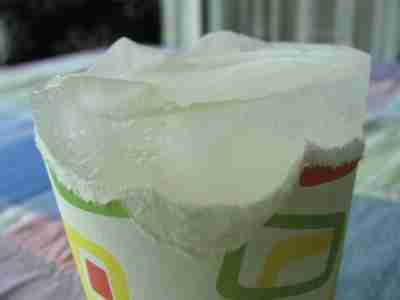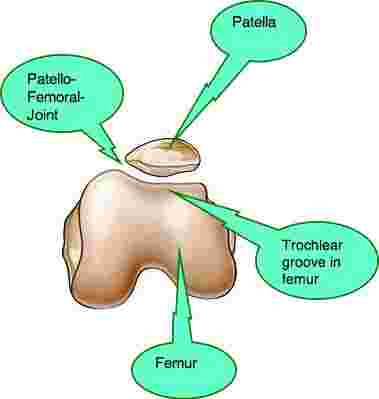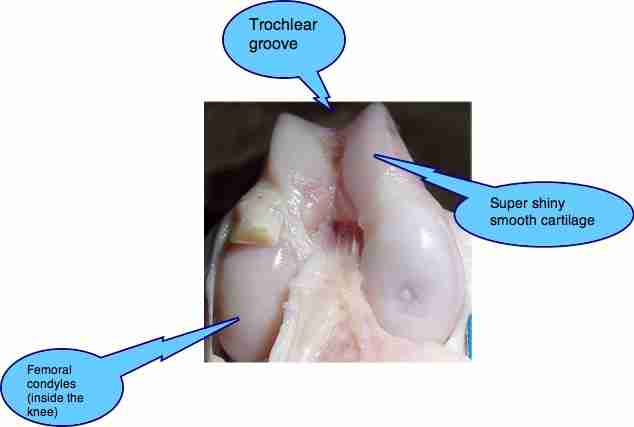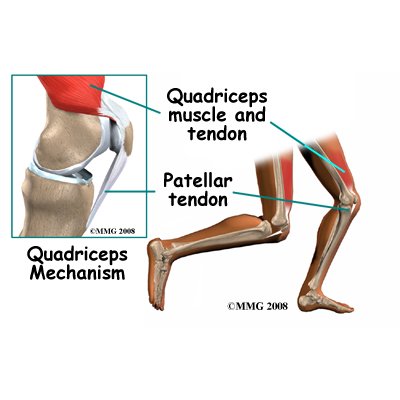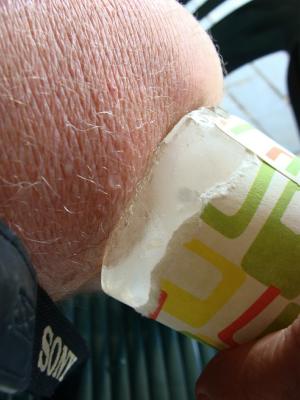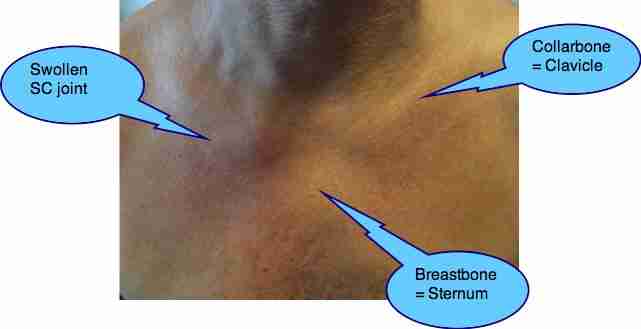| Back to Back Issues Page |
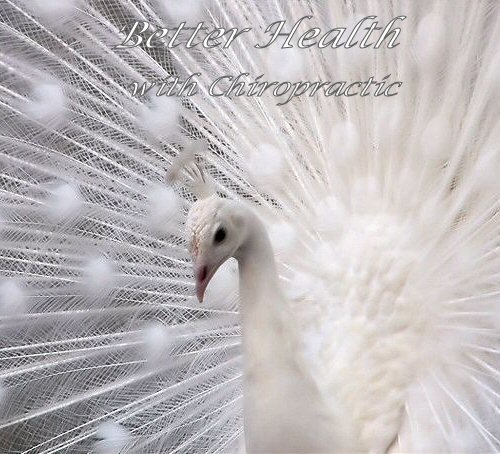 |
|
CHIROPRACTIC HELP #24: COLD HOT THERAPY September 13, 2011 |
DearCOLD HOT THERAPY
Greetings once again from Chiropractic-Help.com In our monthly newsletter we try hard not to merely add to your information overload. We sift through interesting questions brought to us from our patients at the Chiropractic Coalface and from the correspondence I regularly receive from you. This month we focus on the use of cold and heat therapy in the treatment of knee and breastbone pain, and in particular the Patello Femoral Pain syndrome - kneecap pain. In short, when would you use heat and ice therapy?
And in fact, usually what is best is a mixture of heat and ice therapy. Actually vice versa. First ice cold therapy followed by moist heat. For example, PATELLO FEMORAL PAINYou are walking on the street, or in the garden, and you trip over an unseen obstacle, and fall - hard - straight onto your kneecap. Ouch. The force drives your kneecap hard up against the cartilage of the underlying femur.Normally the kneecap - patella - slides neatly up and down in the "trochlear groove" but if it is forcibly shoved against the sides of the groove the cartilage will be injured. It's lined with super-smooth hyaline cartilage - in fact the thickest cartilage in the body, because the forces on the kneecap are horrendous.
Yes, that's a cartilage defect in the femoral condyle that you've probably spotted too. It's the beginning of osteoarthritis of the knee, which awaits all obese folk, especially women because of something called the Q-angle that we won't go into today. Apologies for going on and on and on and on about obesity. It will cause you pain, lots of it. Aside: Pain in the pocket book too. Obesity and diabetes are directly related. "After adjusting for population age and sex differences, average medical expenditures among people with diagnosed diabetes were 2.3 times higher than what expenditures would be in the absence of diabetes." STAIRSThe kneecap transmits the enormous force of the quadriceps muscle in the thigh to the patellar tendon which is attached to the "tibial tubercle" on the lower leg, straightening the knee, called extension.Every step, every time you jump, stand up from a chair, go up or down stairs, the quadriceps contracts and the enormous forces are directed via the patellar to the tibia enabling you to straighten the knee going uphill, and stop it bending too much when walking downhill.
Patello-Femoral arthralgiaThere are two large muscles in the quadriceps that balance each other: theIf one or the other is weak, then the kneecap tracks to the opposite side causing an excessive rubbing against the sides of the trochlear groove. If the Vastus Lateralis muscle fatigues faster, then the patella tracks against the medial condyle, and the condition is called Patello-Femoral Arthralgia (PFA). Typically, walking UP stairs hurts. If the Vastus Medialis muscle fatigues faster than Lateralis, then the patella tracks against the lateral condyle, and the condition is called Excessive Lateral Pressure Syndrome (ELPS). Typically, walking DOWN stairs hurts. The foot should be checked too, because ELPS is associated with foot pronation. (PS. Forget the terms) Either way, a roughening of the hyaline artilage begins, resulting in a degenerative joint surface. Arthr-algia = Joint-pain. Pain on walking, of course. Sometimes, the calcium starts being deposited in the joint causing "chondro-calcinosis". Can you spot the calcium crystals being laid down in the joint in this next graphic?
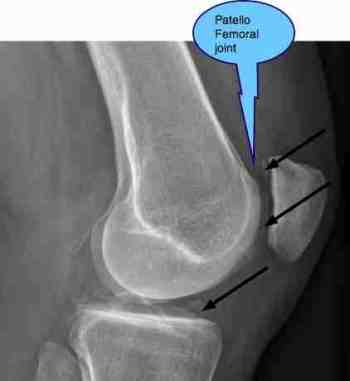
The good news is that these kneecap conditions respond very well to chiropractic. The lady with the knee above is fiftyish and had knee pain for two years. After only 4-5 chiropractic treatments she is dramatically better. Rehab to strengthen the weak Vastus muscle is vital, and sometimes the ankle must be addressed. Foot pronation also causes the lateral tracking of the kneecap. Ice therapy: how good is the evidence?Chiropractor Dr Mac Auley DC did a literature search (see: Int J Sports Med. 2001 Jul;22(5):379-84.) A researcher at the Institute of Postgraduate Medicine and Health Science University of Ulster, Dr Mac Auley reported: Ice, compression and elevation are the basic principles of acute soft tissue injury. Few clinicians, however, can give specific evidence based guidance on the appropriate duration of each individual treatment session, the frequency of application, or the length of the treatment program. A systematic literature search was performed using the key words ice, injury, sport and exercise. Temperature change within the muscle depends on the method of application, duration of application, initial temperature, and depth of subcutaneous fat. The evidence from this systematic review suggests that Using repeated, rather than continuous, ice applications helps sustain reduced muscle temperature without compromising the skin and allows the superficial skin temperature to return to normal while deeper muscle temperature remains low. Reflex activity and motor function are impaired following ice treatment so patients may be more susceptible to injury for up to 30 minutes following treatment. It is concluded that ice is effective for acute conditions, but should be applied in repeated application of 10 minutes to be most effective, avoid side effects, and prevent possible further injury. My comment: In this abstract concerning ice cold therapy for muscle injuries no mention is made of the difference in applying ice for joint injuries such as a Patello Femoral Pain syndrome (where the tissue is non-muscular and only a few mm below the skin) and a lower back disc injury where the joints involved are are a good 20-30mm deep. So it would seem that your ice cold therapy should be applied more frequently for muscle injuries, but for a shorter time. For joint conditions? If the ice is applied directly to the skin as in an ice massage, compared to over a thin cloth, then certainly for a shorter time. ICE COLD THERAPYTake a polystyrene or paper cup, fill it with water and place it in the freezer. When it's completely frozen, tear a little of the cup away around the rim leaving the ice proud. Perfect for an ice massage.So, research shows that repeated short applications (around the knee, perhaps ten minutes, and for deeper tissues such as acute lower back pain, rather longer, perhaps twenty minutes) of wet ice is best. This allows chilling of the deep tissues, whilst allowing the skin to again warm up between applications. Such an application is messy on the back, perhaps an icepack in a teatowel for twenty minutes might be a good compromise.
COLD AND HEAT THERAPYI like in the practice to use alternating heat and ice therapy since most injuries are more than 48 hours old. Actually ice and heat therapy. First apply your ice cold therapy with an ice cup or ice pack, and then stand in a hot shower, or use a hot water bottle for a shorter period.
which can cause severe breastbone pain affecting either the collar bone or ribs. Done in the shower, alternating cold hot therapy is very effective for joints just below the skin. Take for example this unedited letter I recently received (in the horrible English of some Americans, alas): I have bulding discs from c2 to c7 and Tietze syndrome,my pain meds help my back ,but do not touch my rib cage,i have beeen disabled for 7 yrs the pain doctor keeps giving me anti inflamatory drugs and oxcdone/325 that helps my back,no one knows how to treat this syndrome, when it first occacured the dotors thought I was crazy,the hospitals too, I got labled as a drug seeker,and know one knows how to treat it,nothing helps either,I was on antiscokics ,seizie meds,got injections nothing works,unless I am on strong pain meds ,and nobdy wants to give them to me, I do not know what to do ,it is depressing and not even my family understand it. Please help. COLD HOT THERAPYFor chronic injuries a hot moist pack may be more helpful that ice. It's important not to use heat over swollen or inflammed joints or muscles however as it increases the blood flow and the temperature of the tissue; it will only increase the swelling.Heat therapy over tight muscles and joints BEFORE exercise is advisable making the tissues more supple and elastic. A hot shower, or a hotwater bottle over a moist cloth for ten to fifteen minutes would be fine, depending on the depth of the tissue. I'm quite strict about lower back exercises before getting out of bed, especially for chronic conditions. The tissues are already warm from a night in bed, curled up under the eiderdown, "onder de veren" as they say in Holland because, once up and about, my lower back exercises usually don't get done. But after your shower or bath they might be even better... if you're disciplined enough to return to your bed for a minute and a half.
ALOE VERA
Every home should have an Aloe Vera. EVERY HOME, yes yours too! In the first place it's just a very beautiful plant. It makes a wonderful indoor potted plant for the home, but does equally well in most gardens. Ours above is looking a little tatty after the coldest winter in 60 years, but it survived. In a Chicago winter, you should bring it inside. But more important, it has wonderfuL, though unproven healing qualities for burns, scrapes, and skin reactions. As mentioned in a previous newsletter, I had a severe reaction to a toxic plant in our garden. The large angry red lesion, about 5cmx7cm wouldn't heal. After two months I resorted to a cortisone cream. That made it worse. The burning, nerve-like pain started waking me at night. After three days of applying the gel from this little plant, several times a day, the pain stopped and within a couple weeks there remained only a slightly reddish non-painful scarring of the skin. Now six months later, there's not a sign of the lesion. Having said all that, the scientific research is contradictory. Some research showing Aloe Vera is helpful for a variety of conditions including heartburn, irritable bowel syndrome, second degree burns, and other research that it is not effective. So my report is just anecdotal. Treat it as such, but do buy a plant. They are inexpensive. More from Wiki on
ALOE VERA 13 surprising and powerful benefits of aloe vera BATS IN MY BELFRY"Thank you for re-inspiring me in my chiropractic studies. I had lost my motivation and drive. Reading your book gave that back to me." Steven.
Writing books is a long and arduous process, as some of you probably know. About five years each for Frog, Bats and Clog. Bats in my Belfry is now available for only $2.99 if you are prepared to read it on your Kindle or smartphone, but also a paper copy if you live in the USA, Canada or South Africa. Postage is horrific, I'm afraid. Letters like that above from Steven, received this week, make it all worth while. Read it, and give it to your chiropractor! Or doctor!! Perhaps for a Christmas present.
FROM THE GARDENIf you live in the Southern Hemisphere, have you planted your first pole beans? So easy, even in the tiniest garden, so rewarding in helping us to lessen our reliance on red meat, cheese and eggs for our protein. Just three seeds planted once a month will do wonders... Witsa is our favourite.
BEHIND THE CAPE VIOLETSI've had a wonderful, if exhausting two-and-a-half months in the Netherlands doing a locum, and now it's glorious being back home in sunny South Africa, with time to get back in my own garden again. You'll have to read STONES IN MY CLOG , anecdotes from my Dutch Chiropractic coalface, to appreciate the bit about de Kaapse viooltjes! The Dutch have such wonderful sayings.
"The pursuit of truth and beauty is a sphere of activity in which we are permitted to remain children all our lives."
Albert Einstein
HARD TIMESMoney is tight the world over. Energy consumption too. And lower back pain is soaring.Do you want to kill three birds with one stone? Iron clothes for VERY SPECIAL OCCASIONS only. You have no idea how many people complain of increased back pain from the long hours spent ironing. Reduce your costs, save the planet and try and put your chiropractor out of business by spending no more than fifteen minutes a week ironing! Perhaps five minutes. All the best for another month. Eat more healthily, exercise more and exercise your brain with crosswords, sudoku, chess.... read a Bernard Preston book! Yours in better health,
Bernard Preston DC Chiropractic-Help.com
Bernard-Preston.com
|
| Back to Back Issues Page |
